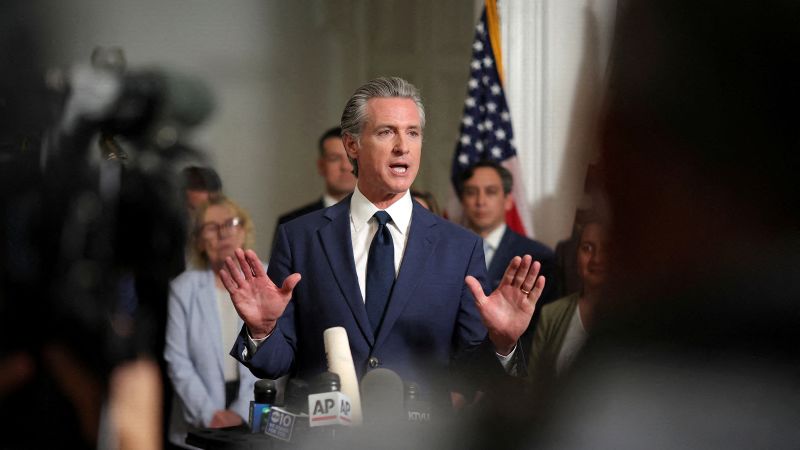In the evolving landscape of American politics, the Democratic Party, particularly in California, is navigating a turbulent gerrymandering situation that has intensified with Texas Republicans pursuing aggressive redistricting strategies. Governor Gavin Newsom of California has put himself at the forefront of this Republican challenge, with Democrats banking on his leadership to help them counteract the Republican-dominated map-drawing efforts in Texas. Newsom’s move comes at a critical time when Texas Democrats are debating whether to end their legislative walkout, aimed at thwarting what they perceive as an overreach of power by the Texas GOP to establish a more favorable electoral map.
The situation puts an increasing amount of pressure on Newsom as he contemplates a response through the redrawing of California’s own congressional maps; his message suggests that he is prepared to retaliate against Texas Republicans by enacting new Democratic-leaning districts. However, this gambit carries significant risks for both Newsom and the Democratic Party as a whole. The Republican side might be tempted to challenge Democrats, particularly if they perceive that the opposition is bluffing.
California presents quite an opportunity for Democrats to execute their plans, as they might be able to compensate for several Republican districts formed in Texas with their own. There are not many alternative states where Democrats can retaliate effectively if this gerrymandering arms race continues to grow. With the prospect of acting swiftly to adjust congressional maps to favor their party in time for the 2026 midterm elections, California could be crucial. This strategic advantage provides a compelling reason for Democrats to threaten a political counter-offensive against Texas Republicans.
However, the execution of this plan is anything but straightforward. Unlike the Texas GOP, which can proceed with a more straightforward approach, California Democrats must navigate a convoluted path to achieve this. The first step requires them to secure voter approval for a ballot measure in the upcoming November election to dismantle the established redistricting commission. Newsom has publicly expressed confidence that voters will understand the stakes involved and approve the measure, asserting, “We live in the most un-Trump state in America.” However, transforming voter sentiment to back a more politically driven redistricting process remains a complex undertaking.
Historical context suggests that convincing voters to endorse a more politicized redistricting system—essentially a form of gerrymandering—is fraught with difficulties. For instance, evidence shows that voters generally favor redistricting commissions, supporting such measures approximately two-thirds of the time in recent decades. However, a notable failure came last year in Ohio when voters rejected a proposed commission due to misleading language crafted by Republican leaders, which painted the new commission as a threat to fair redistricting.
Although California voters are not being asked to create a new commission but are rather facing the removal of the existing one, their previous experience in 2010—where they rejected a similar proposal by a significant margin—casts a shadow on Newsom’s current beliefs. Previously, they had supported a redistricting commission in 2008, but subsequent attempts to repeal it were largely unsuccessful, leaving the Democratic strategy at a precarious crossroads.
While Newsom appears to be banking on a shift in voter perception about fairness and retaliation against Republicans, there is a general disconnect among voters pertaining to gerrymandering. Polls indicate a broad disapproval of gerrymandering, yet most Americans do not closely scrutinize redistricting issues. Thus, persuading California voters who appreciate an independent redistricting process to abandon this principle due to political expediency presents a formidable challenge.
Moreover, there are inherent risks tied to Newsom’s maneuver. His political aspirations might be jeopardized if voters reject the proposed measure, leading to questions about his effectiveness as a leader and potentially diminishing his national standing, especially ahead of a likely presidential bid in 2028. A failure to secure voter support would not only damage his credibility but might also galvanize Republican efforts in other states to continue their gerrymandering campaigns, feeling encouraged that Democrats are unable to retaliate effectively.
Despite the complexity and challenges accompanying this strategy, it is also crucial for Democrats to explore avenues to counter Texas Republicans’ comprehensive re-districting efforts. This intricate situation will serve as a litmus test for Newsom’s leadership and the Democratic Party’s resolve within the wider political contest. The gerrymandering wars indicate a significant shift in the political battlefield, and how each party navigates this landscape will shape the electoral map for years to come.











